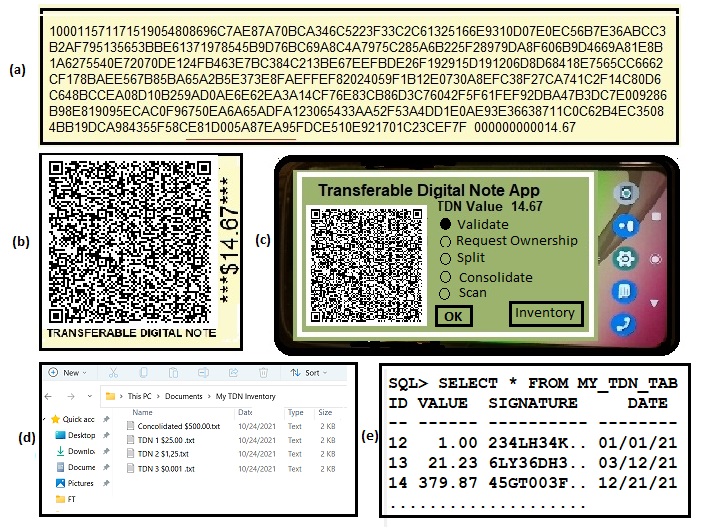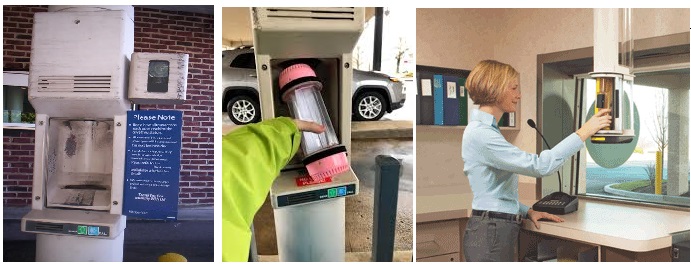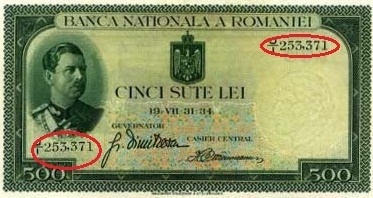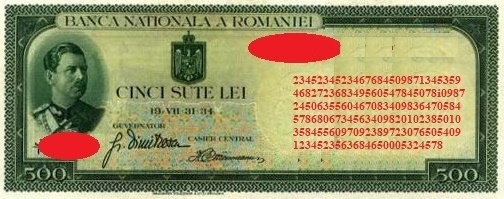 TDNSYS Details
TDNSYS Details
The Transferable Digital Notes System (TDNSYS) is a simple, reliable and easy to implement solution for Central Bank Digital Currency (CBDC). The system is centralized, based on the client-server model and can be implemented employing existing, reliable and proven state of the art technologies used in the Financial market infrastructures (FMIs). The system must be implemented on the central bank's IT infrastructure..
The basic concept behind token-based CBDC is to use digital tokens for payments in the same way we use cash. It is like using the serial number on a note to make a payment instead of the paper note itself. The digital tokens should have similar characteristics and behavior to paper notes with the added benefit that they can be processed like any other digital data. There is no need for digital wallets, accounts, blockchain/DLT, or cryptography for processing digital tokens.
The long string of characters is called the TDN Signature. TDN and TDN Signature are used interchangeably. TDNSYS is the system processing TDNs. It is deployed on the Fed's IT infrastructure.
Fig 1 shows a TDN stored in a text file (a), as a QR code (b), a TDN Android App (c), TDN text files stored on a file system (d), and stored in a DB (e).
The challenge with a CBDC token-based system is double-spending prevention. TDNSYS offers a simple and elegant solution to this problem. The mechanism for preventing double-spending is similar to preventing the previous owner of a vault from accessing the content of the volt by changing the lock combination. The use case below shows how TDN double-spending is prevented.
TDNSYS resolves only the technical problems of implementing a token-based CBDC. The financial, economical, social, and political implications are not addressed by the TDNSYS. A TDNSYS prototype able to run simulations of different use-cases for analyzing this impact can be very easily built.
TDNSYS is based on the client/server model. The server side is owned by the Central Bank. The main component is the TDN Repository, a very fast, ACID-compliant ISAM database in compliance with all the security, reliability, and redundancy applying to today’s financial systems. The server side interacts with the clients through a published API.
Performing a TDN transaction requires only one or two database operations and minimum processor time, making the system as fast as, if not faster than credit card transactions. When a TDN is secured with a PIN or PKI a few more transactions are executed.
Clients can be bank terminals, cash registers, personal digital devices connected to the Internet, bank terminals and ATMs, vending machines, eCommerce websites, or desktop applications. The server side of TDNSYS contains a website supporting all TDN transactions.
TDNSYS does not have any information about the TDN owner. The Central Bank may mandate that in some situations identification about the ownership requester must be recorded in the repository. This may prevent fraud. For example, all merchants accepting TDNs or owners of TDNs with a value larger than $500.00 may be required to sign their TDNs with a Digital Signature issued by the Central Bank. It should be noticed that the digital identity suitable for such purpose is a subject unrelated to CBDC.
The Central Bank has an official website supporting all the TDN transactions. For example, the use case presented above can be executed using this website. A demo website supporting all TDN transactions can be found at www.tdnsys.com/demo anonymous password qr3R#9
If the Central Bank implements a CBDC based on TDNs other Central Banks will likely deploy TDN based CBDC. Exchanges will be able to convert CBDC from different Central Banks instantly facilitating POS acceptance of TDNs issued by different Central Banks.
The following transactions are supported by a TDNSYS:
- Issue TDN The Central Bank issues a TDN to a Retail Bank.
- Redeem TDN A Retail Bank deposits a TDN in its Central Bank reserve account.
- Validate TDN An entity requests for a TDN validity check.
- Split TDN An entity in the possession of the TDN requests two TDNs.
- Consolidate TDNs An entity in the possession of two TDNs requests one TDN.
- Get TDN Ownership An entity in the possession of a TDN requests ownership of the TDN. (prevent double spending)
- Fraud investigation An authorized authority can block the transfer of a TDN during an legal investigation and unblock or cancel it when the investigation is finished.
A TDN can be obtained from a bank in the same way as cash. You can withdraw a TDN from your bank account. You can also request a TDN for some amount in exchange for cash at the teller window.
You can use a TDN debit card issued by your bank in the same way you use a normal debit card and you do not have to know how the TDNs are transferred from you bank to the retailer. What is different from a normal debit card is the fact that the retailer gets the money instantly, there is no waiting time for the transaction to clear.
One obvious important difference between paper money and TDNs is the fact that TDNs can be transferred instantly over digital networks. To transfer paper money the two parties involved in the transfer have to be in direct contact or make use of some kind of physical transport system like armored trucks, curriers or pneumatic tubes(for short distances). In today's world, when everybody is connected to the Internet, TDNs can easily gain wide acceptance.
To analyze the implications of instant money transfer and to have a better understanding of the differences and similarities between TDNs and paper money we can consider a network similar to the Internet but instead of moving around packets of information this network is able to move small physical objects from one place to another. For example we can imagine a hypothetical network where everybody is connected to a Pneumatic Tube Transport (PTT) network. Such networks actually exist and are used for transporting papers, small packages and money. Before the e-mail and the Internet in some major cities there were in existence PTT for handling mail. (see sidebar).
As an example let's say that John wants to transfer some paper money to Jane. If they are not in direct contact the transaction may be expensive and time consuming. If John and Jane are connected to our imaginary PTT network John will put the paper money in a tub, place it in appropriate receptacle, enter Jane's address and press SEND. The tube will be routed through the network and after a short time Jane will receive the money.
Let's take a look of this transaction step by step:
- 1. If John does not have any cash on hand he goes to the bank and with withdraw cash from his bank account at an ATM or at a bank branch.
- 2. John goes home or to some location where he has access to our imaginary PTT.
- 3. John inserts the money in the container, inserts it in the PTT terminal, enters Jane's address and presses SEND.
- 4. Money is received by Jane at her PTT terminal after some acceptable period of time.
- 5. Jane may want to deposits the money into her bank account and has to go at an ATM or to a bank branch.
In this example there is no financial institution involved in the transfer. John and Jane rely on the PTT network for money tansfer and the transaction security and anonymity.
Now let's see how the same transaction is performed using TDNs over the Internet. Instead of using physical objects for handling the money John and Jane have to use digital devices and in this situation they need basic computer knowledge.
- 1. Getting a TDN for the amount to transfer:
- John may have a TDN of this amount on one of his digital devices.( see How TDNs are stored and manipulated) If he does not have a TDN for this amount he does one of the following:
- Splits and/or consolidates TDNs he already has in order to generate a TDN for the amount to be transferred.
- Logs on to his bank website and withdraws a TDN from his bank account.
- Goes to a bank or store and exchanges cash for a TDN.
- Goes to an ATM or a bank branch and withdraws a TDN from his bank account.
- 2. Initiating the transfer:
- John sends an e-mail, SMS or contacts Jane by Skype or other video conferencing and passes her the TDN
text or barcode .
- Jane receives the TDN and stores it on a digital device.
- To validate and prevent double spending Jane requests TDN ownership using the Central Bank website.
- Jane may want to deposit the TDN in her bank account using the bank's website or going to a branch or an ATM.
This money transfer shows the basic steps of a TDN transaction. TDN holders have many other means for sending money and making payments.
An example of a fast TDN transaction is using a vending machine or renting at a bike share stand. If the stand were
equipped with a terminal connected to our imaginary PTT network there is no need to have a credit card and an account with
the bike sharing company. Just insert the appropriate amount in the receptacle and press SEND. TDNSYS offers this
exact functionality. Just scan the bar code of a TDN for the rental fee and the transaction is completed.
In the event you need to get change or a refund the TDNSYS terminal will display the appropriate 
TDNs, like paper money can be lost or stolen. It is the responsibility of the holder of a TDN to store it on a secure digital device.
If printed on paper or on the display of a digital device the holder of the TDN has to be aware that if publicly exposed,
the 
 Fig. 1
Fig. 1




